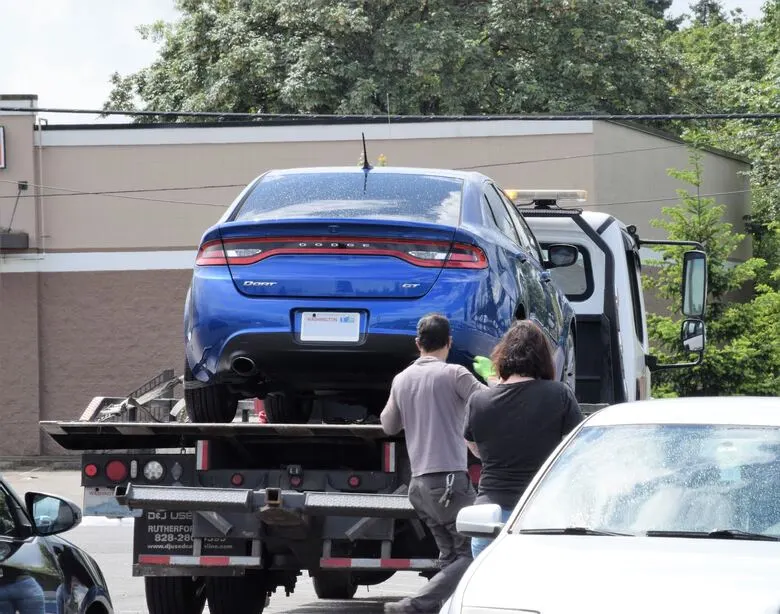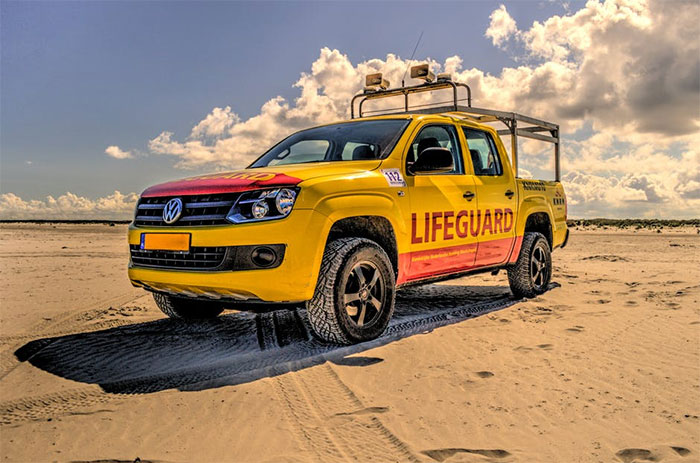Towing can be a practical and cost-effective solution for transporting vehicles or trailers, but it also comes with responsibilities and safety considerations. This beginner’s handbook is your go-to guide for ensuring safe towing practices and making your towing experiences as smooth as possible and Dawnerz will make it easy to purchase high-quality tow straps.

Table of Contents
Know Your Vehicle’s Towing Capacity
1. Consult Your Vehicle’s Manual
Begin by consulting your vehicle’s manual to determine its towing capacity. Exceeding this capacity can lead to dangerous situations and damage to your vehicle. Furthermore, it is advisable to make sure that you choose the appropriate length of the towing strap.
2. Understand Gross Vehicle Weight Rating (GVWR)
The GVWR is the maximum weight a vehicle can safely carry, including its weight and any towed load. Ensure your total load, including the trailer, does not exceed this rating.
3. Account for Trailer Weight
Don’t forget to include the weight of the trailer itself when calculating the total weight being towed. Many beginners overlook this aspect, which can lead to overloading.
Use the Right Tow Hitch
1. Receiver Hitch vs. Bumper Hitch
Select the appropriate hitch for your towing needs. A receiver hitch is often more versatile and can handle a variety of trailer types. Bumper hitches are typically less robust and suitable for lighter loads.
2. Weight Distribution Hitches
For larger loads, consider using a weight distribution hitch to help evenly distribute the weight between the trailer and the towing vehicle.
3. Gooseneck and Fifth-Wheel Hitches
These hitches are designed for heavy loads and offer improved stability and control. Use them when towing large trailers or fifth-wheel campers.
Distribute the Weight Properly
1. Maintain Proper Tongue Weight
Ensure that the trailer’s tongue weight is within the recommended range, typically around 10-15% of the trailer’s total weight. This helps maintain stability.
2. Balance the Load
Distribute the load evenly within the trailer to prevent weight imbalances that can lead to sway or poor handling.
Secure the Cargo Use tie-downs, straps, and load-securing devices to prevent the cargo from shifting during transit.
Perform a Safety Check
1. Inspect Tires and Tire Pressure
Check the condition and pressure of your vehicle and trailer tires. Underinflated or damaged tires can pose a significant risk.
2. Ensure Functional Lights and Signals
Test all trailer lights and signals before hitting the road. Proper lighting is crucial for safety, especially when driving at night.
3. Double-Check All Hitching Components
Inspect the hitch, coupler, safety chains, and any attachment points to ensure everything is properly secured.
Drive Cautiously and Avoid Sudden Movements
1. Maintain Safe Speeds
Drive at a safe and reasonable speed, taking into account the added weight and potential reduced braking efficiency.
2. Use Turn Signals Early
Signal your intentions well in advance to give other drivers ample notice of your actions.
3. Increase Stopping Distances
Expect longer braking distances when towing and maintain a greater following distance to ensure your safety and that of others.
Understand Trailer Sway and How to Control It
1. Causes of Trailer Sway
Trailer sway can occur due to various factors, including wind, improper weight distribution, and sudden maneuvers. Learn to recognize and address it.
2. Controlling Sway with Techniques
Counteract the trailer sway by steering gently in the opposite direction of the way, then slowly straightening the steering wheel.
3. Use Anti-Sway Devices
Consider using anti-sway devices, such as sway bars or friction sway controls, to help mitigate trailer sway.
Plan for Braking Distance
1. Know the Added Stopping Distance
Factor in the increased stopping distance when towing. Plan your braking maneuvers accordingly and anticipate traffic flow.
2. Brake Gradually and Smoothly
Apply the brakes gently and progressively to avoid skidding or losing control.
3. Use Trailer Brakes if Available
If your trailer is equipped with brakes, use them in conjunction with your vehicle’s brakes for improved stopping power.
Be Aware of Weather Conditions
1. Adjust Driving for Rain, Snow, and Wind
Modify your driving behavior in adverse weather conditions to accommodate reduced visibility and slippery road surfaces.
2. Plan for Reduced Visibility
Fog, heavy rain, and snow can reduce visibility. Use your vehicle’s fog lights or additional lighting when necessary.
3. Monitor Weather Updates
Stay informed about weather conditions along your route and be prepared to adjust your travel plans accordingly.
Practice Safe Loading and Unloading
1. Use Loading Ramps and Braces
For vehicles with low ground clearance, consider using loading ramps to prevent damage during loading and unloading. Use chocks or braces to secure the wheels.
2. Communicate with a Spotter
When loading or unloading, have a spotter guide you to avoid obstacles and ensure safety.
3. Secure the Vehicle Before Unloading
Before unloading a towed vehicle, ensure it is safely secured and disconnected from the towing vehicle.
Emergency Situations and Troubleshooting
1. Handling Blowouts
If you experience a tire blowout, maintain a steady grip on the steering wheel, gradually slow down, and pull over safely. Avoid sudden maneuvers.
2. Dealing with Breakdowns
In the event of a vehicle breakdown, pull over to a safe location, use hazard lights, and call for assistance or roadside service.
3. Emergency Towing Services
Know the contact details of reliable towing services in case of an emergency. Be prepared for unexpected situations.
Conclusion: Tow with Confidence and Responsibility
Recap of Key Safety Tips Understanding and implementing these essential tips is crucial for safe towing. Always prioritize safety and responsibility when towing.
Stay Informed and Stay Safe Continuously educate yourself about towing safety and regulations. Remember that responsible towing is not just about protecting your vehicle but ensuring the safety of everyone on the road. Tow with confidence and drive responsibly.











Leave a Reply